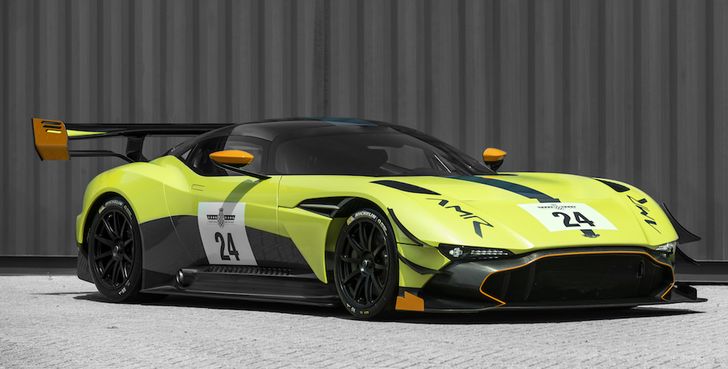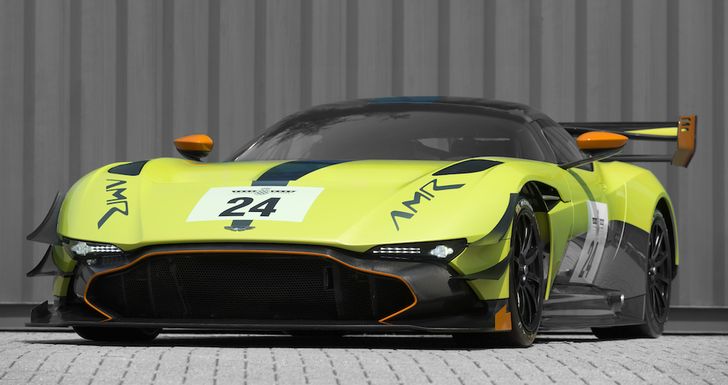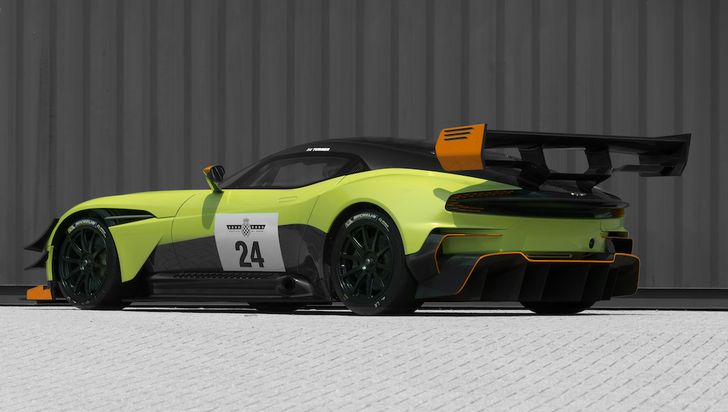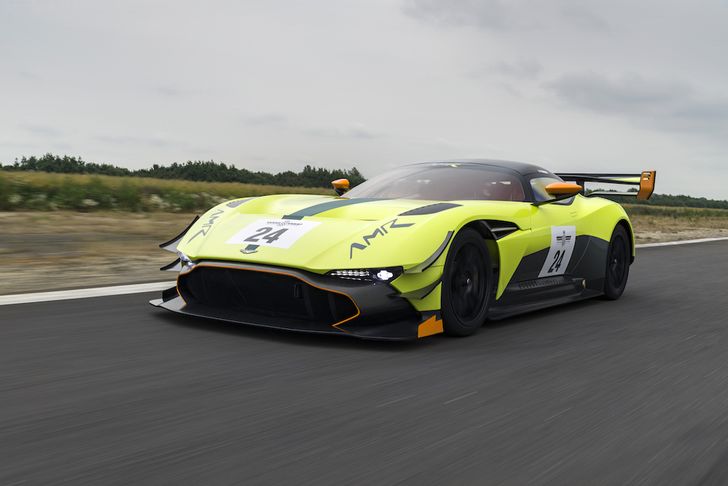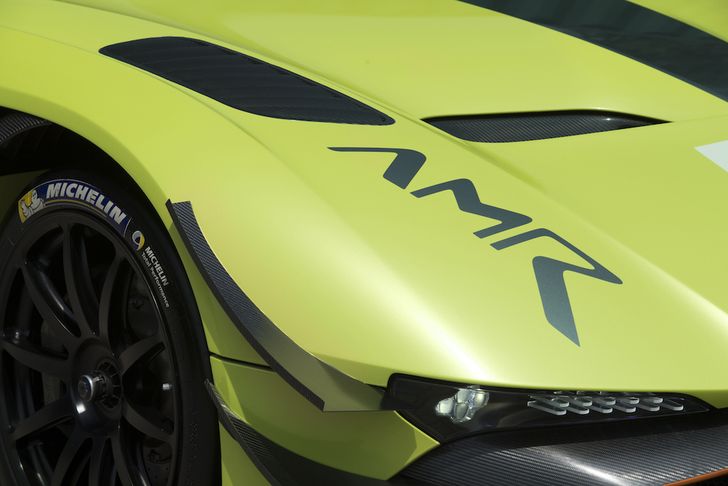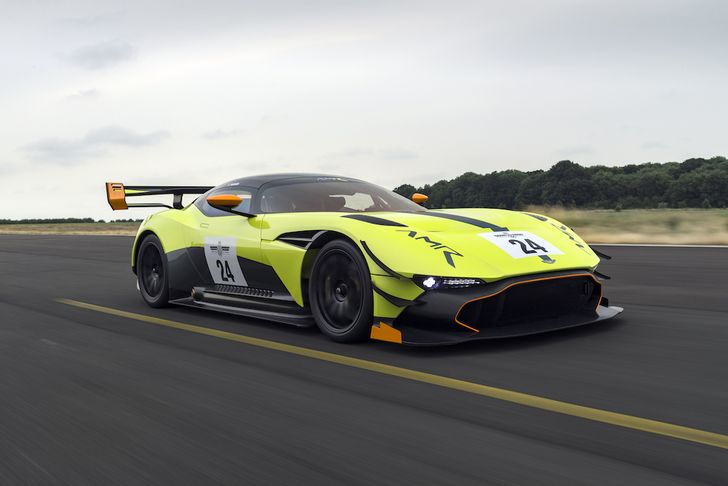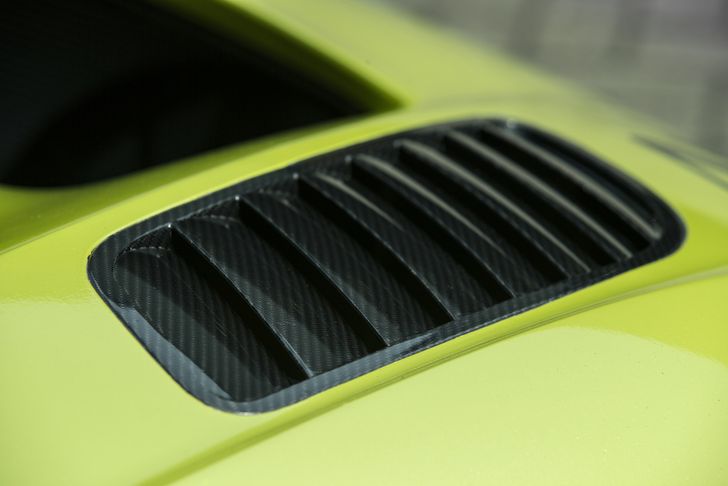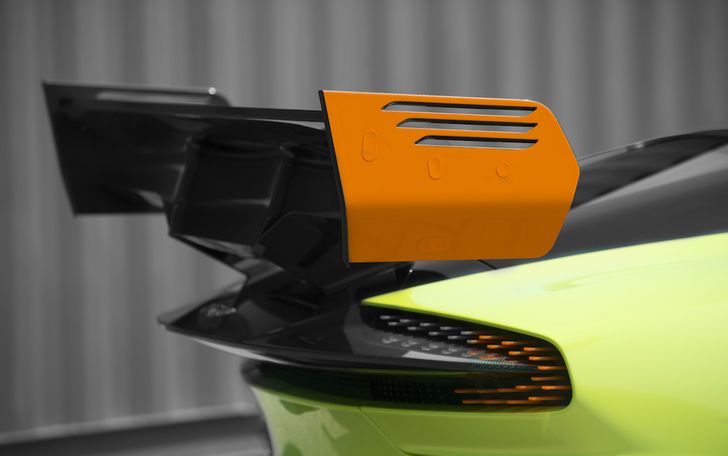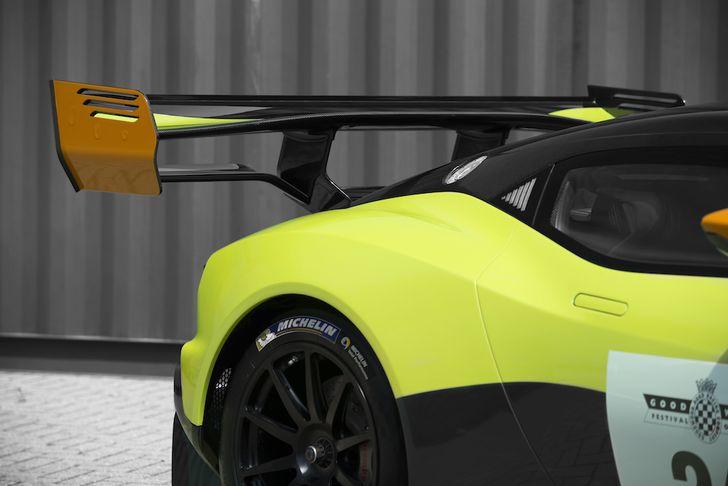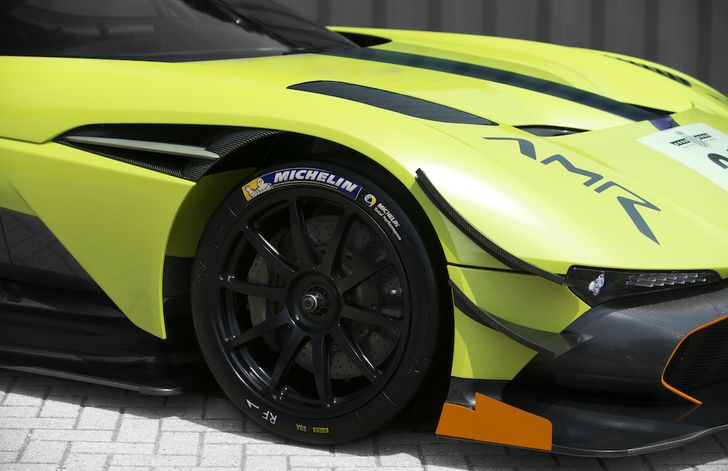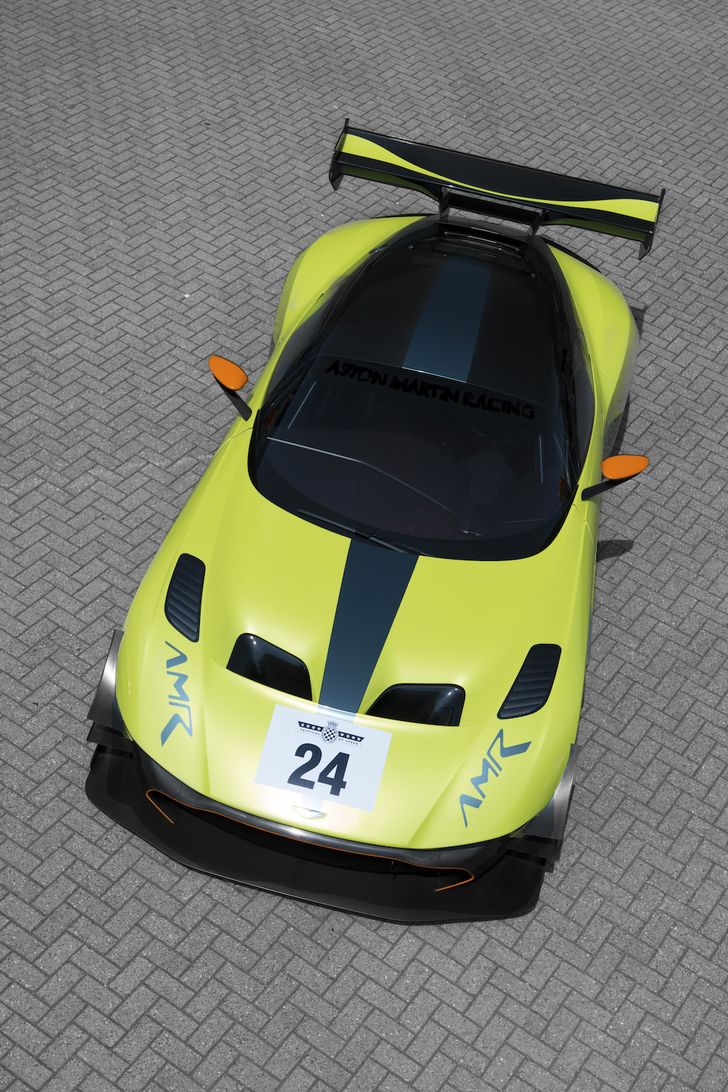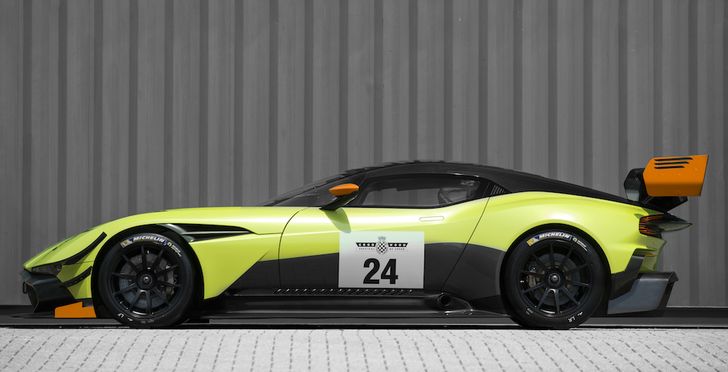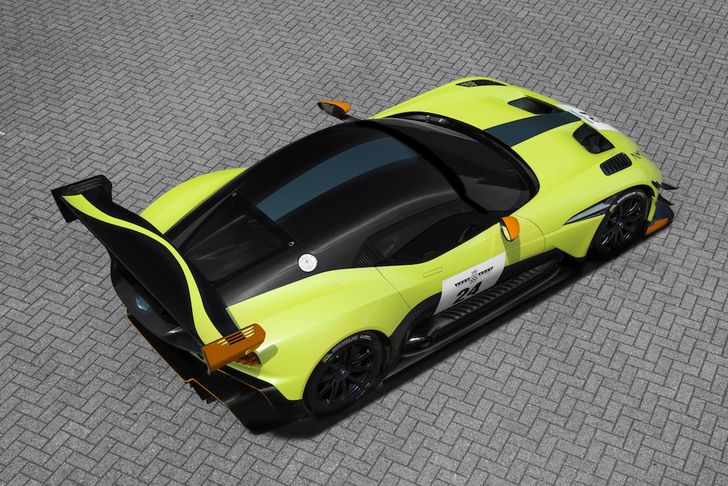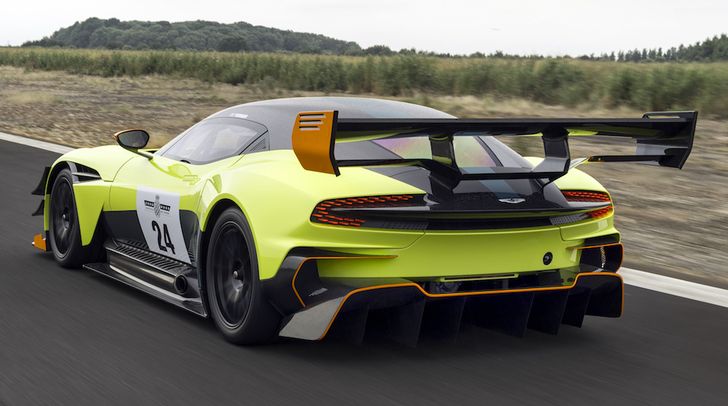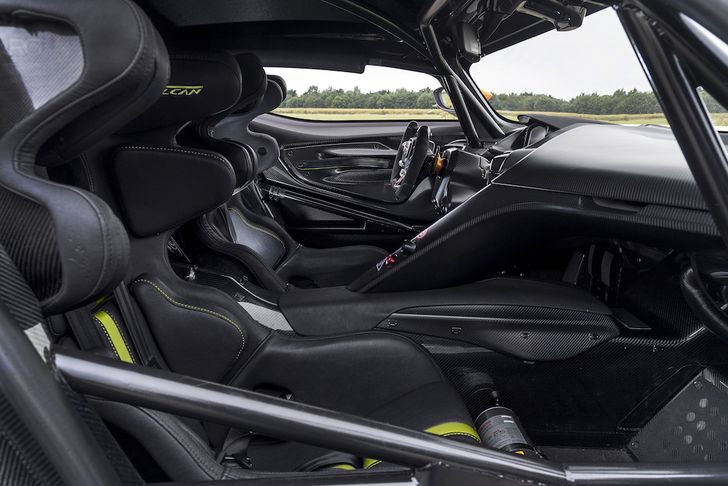/https%3A%2F%2Fcdn.pijper.io%2Fsource%2Fautobahn%2F62ee95c145_Vulcan_AMR_Pro-001.jpg)
Bestaande eigenaren van de Vulcan hoeven niet te vrezen voor hun exclusiviteit: er waren niet meer dan een dubbel dozijn Vulcans en dat blijft ook zo. Het AMR Pro-pakket is namelijk een optionele upgrade voor de bestaande, 820 pk sterke exemplaren. Naast een gewichtsbesparing krijgt de Vulcan (dik 2 miljoen euro aanschafwaarde, circuitpr0n hier) meer downforce, waardoor zijn rijke bestuurder sneller een bocht door kan. Kortom: het is een fijnslijpsessie, die elke eigenaar aanschaft. Je wilt per slot van rekening niet met een inferieure Vulcan naar een track event komen en door je medemiljardairs uitgelachen worden.
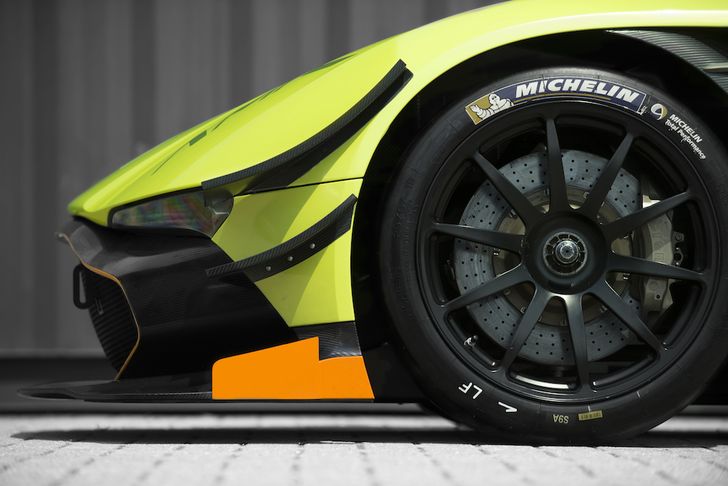
De Vulcan maakt vandaag - ongetwijfeld hevig knetterend en bandenrokend - zijn debuut op Goodwood, de eerste klanten krijgen hun upgrades deze herfst. Dit verbeterde er aan de auto:
The Aston Martin Vulcan AMR Pro’s aerodynamic enhancements begin at the front-end with louvred panels added above the front wheel arches to extract high pressure air and reduce aerodynamic lift. A sizeable pair of dive planes have been added to each side of the nose to help pin the front-end to the track and the huge front splitter has turning vanes fitted to its underside to improve steering response. Weight has also been saved with optimisation of the carbon fibre lay-up and core form reducing the weight of the engine cover by 5kg.
Changes to the rear are equally effective and even more dramatic, courtesy of a new rear wing. Now of dual plane design, rather than the original single plane item, the main element of this enormous rear wing features a 20mm ‘Gurney’ flap - a simple but hugely effective upstand on the wing’s trailing edge - which is supplemented by slotted wing endplates that sport additional 15mm Gurneys to maximise the amount of downforce.
The combined effect of these aerodynamic changes is a major increase in downforce, from the standard Aston Martin Vulcan’s 3150Nm to a colossal 4000Nm. This compares to 3104Nm generated by the 2017 Le Mans winning Aston Martin Racing Vantage GTE. The aero changes have also improved the aerodynamic balance of the Aston Martin Vulcan, shifting its Centre of Pressure forwards bringing it closer to the middle of the car (47% compared with 41.5% for the standard Aston Martin Vulcan) to improve traction, steering response and front-end grip.
